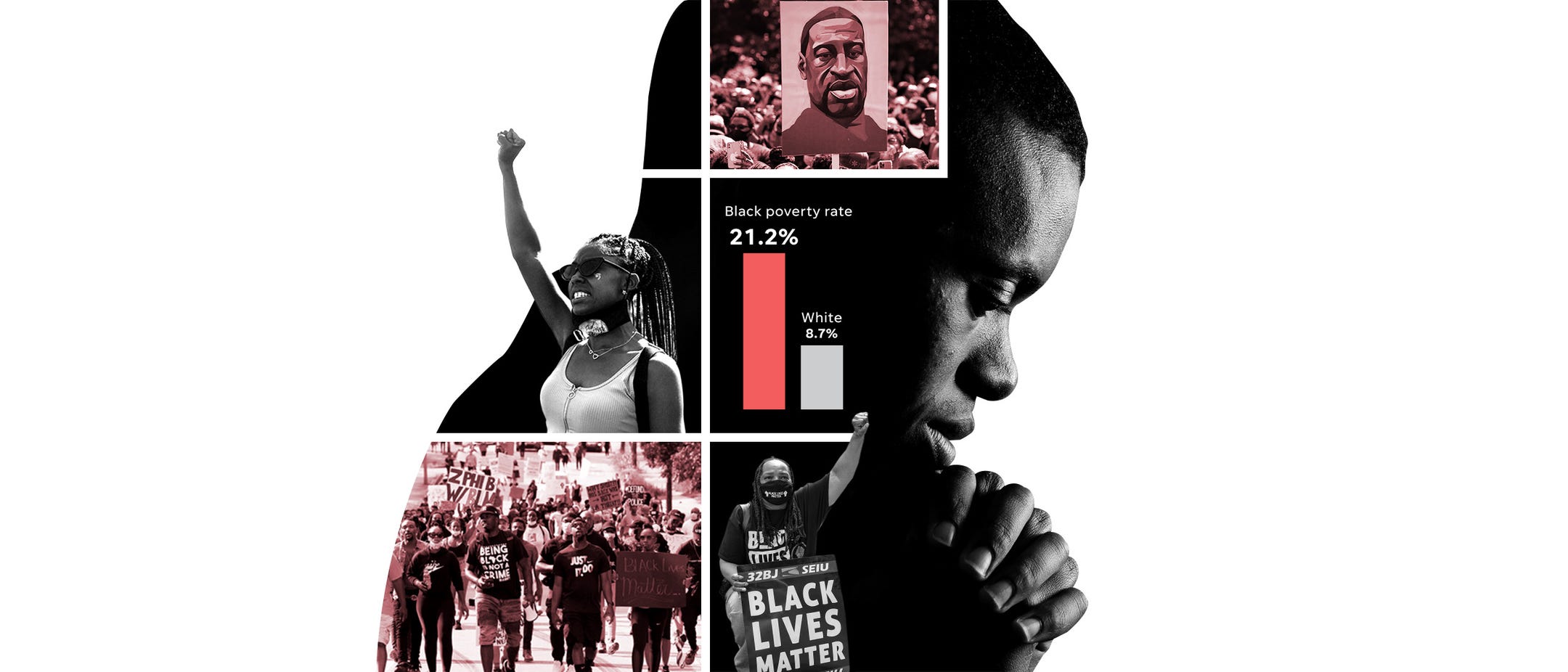
Black people have long suffered from persistent inequality in the United States due to centuries of racism, discrimination and the long-lasting effects of slavery. This has created conditions that make it difficult for Black Americans to get ahead.
Systemic racism — at times called structural racism or institutional racism — is "the complex interaction of culture, policy and institutions that holds in place the outcomes we see in our lives," says Glenn Harris, president of Race Forward. Systemic racism leads to disparities in many "success indicators," he says, including wealth, health, criminal justice, employment, housing, political representation and education.
And numbers from official sources over decades of time back this up.
Here are one dozen charts, showing how inequities impact not just Black Americans’ quality of life, but length of life.
Disparities start in the delivery room ...
Black Americans are also almost twice as likely as white Americans to lack health insurance, according to the U.S. Bureau of Labor Statistics, making it difficult to receive proper care. Disparities are seen across a number of chronic diseases, as well as in the current pandemic. COVID-19 has claimed more than 24,000 Black lives in just a few months, according to the COVID Racial Data Tracker. Whether it's unconscious, explicit, institutional or research bias, discrimination in the health care system contributes to the stark disparities, experts say.
*While Black people make up roughly 13% of the overall US population, in geographic areas where COVID-19 is spiking, they make up closer to 18% of the population.
It’s reflected in overall longevity, too.
From the classroom to the C-suite ...
In schools, Black students face disproportionate suspension rates. For instance, Black girls often receive more severe penalties for the same behavior as white peers, experts say. They are nearly 6 times more likely to get out-of-school suspension, a report from the African American Policy Forum and Columbia Law School’s Center for Intersectionality and Social Policy Studies found. Graduation gaps also persist:
Disparities continue into the workforce. Not only do Black people have a higher unemployment rate than average, they are often left out of high-paying jobs, government data show.
In corporate America, many Black people say they've endured racism in the workplace. Black CEOs among Fortune 500 companies, “make up a tiny fraction” of the list of corporate leaders.
This also impacts income inequality between racial groups, which remains a significant problem.
Black Americans are also less likely to own a home than other racial and ethnic groups.
Although more white Americans live in poverty by total numbers (17 million vs. 9 million Black people), in terms of percentages, Black Americans are almost twice as likely to live below the poverty line as white Americans.
Criminal justice
Black men are 2.5 times more likely to be killed by police than white men, according to a study from the University of Michigan, Rutgers University and Washington University. Bias has also been documented in plea bargains and sentencing. After decades of rising incarceration rates that followed the “get tough on crime’’ mandate of the 1980s, ’90s and early 2000s, the problem of mass incarceration is slowly declining, according to Pew Research data.
Voices in Washington
According to Pew Research, African Americans view “political representation as a potential catalyst for increased racial equality.” However, voter suppression remains a critical issue. While there has been increased Black political leadership in the House of Representatives, the Senate only has three Black senators.